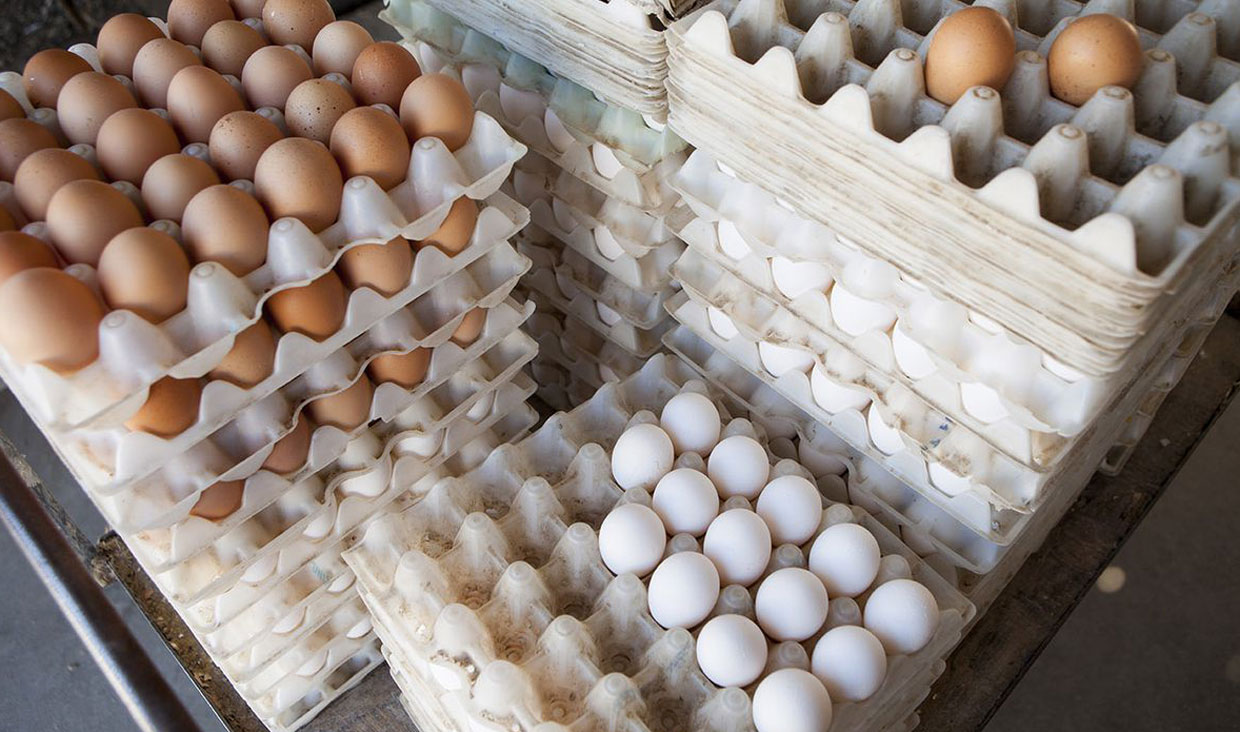Egg prices marked a 9% hike during the week to Dec. 22 compared to the previous week and a 53.7% rise compared with last year’s corresponding week, reaching 126,000-175,000 rials ($3-4.1) for each tray of 30 eggs, a report by the Central Bank of Iran announced.
Nasser Nabipour, the head of the board of directors at Tehran’s Union of Producers of Egg-Laying Chicken, said egg prices have reached 210,000 rials ($5.01) in some markets, ILNA reported.
Among the reasons contributing to the price rise, Hossein Doroudian, an official with Tehran Guild Chamber, refers to an 80% increase in animal feed prices.
Speaking to IRNA, Doroudian mentioned the culling of chicken infected during the fresh outbreak of avian flu, natural disasters like flood in northern Iran and the ban on egg imports among other reasons.
Major egg producing Iranian provinces, namely Qazvin, Tehran, Alborz and East Azarbaijan, are now struggling with avian flu, which has led to the culling of some 16 million chicken so far.
The outbreak is said to have inflicted losses worth over 20 trillion rials ($477.44 million) on production units.
In the wake of the outbreak, the Ministry of Agriculture issued permits for the import of 20,000 tons of eggs at a reduced tariff of 5% (from the regular 55%).
Doroudian noted that as imports gain momentum, the egg market is expected to stabilize in two weeks’ time.
According to Deputy Agriculture Minister Ali Akbar Mehrfard, a shipment of 130,000 tons of eggs have been imported from Turkey and is being distributed in the domestic market, Mehr News Agency reported on Monday. He added that more exports will follow.
No Shortage of Animal Feed
Movafeq Qadiri, the head of Iran Feed Industry Association, said animal feed prices have only increased by 10% during the Iranian month ending Dec. 21 and that the egg price hike mostly owes to the outbreak of aviation flu.
“The increase in animal feed prices is due to fluctuations in foreign currency rates, transport costs and a 5% increase in global prices,” he said, adding that domestic demand for animal feed is sufficiently met and there is no shortage.
On average, 80% of the animal feed in Iran are imported. Iran’s annual domestic animal feed demand stands at 9 million tons worth about $3 billion.
Iranian poultry farms are annually hit by avian flu around this time. Last year, it was first detected in November and in March, it was reported that the virus had spread across 24 Iranian provinces leading to the culling of some 12 million chicken.
The H5N8 strain of bird flu infecting Iranian farms is deadly for poultry, but according to World Health Organization, although human infection with the virus cannot be excluded, the likelihood is low.
The virus spread across Europe and the Middle East late last year and led to the culling of hundreds of thousands of poultry. France, which has the largest poultry flock in the European Union, also reported H5N8 outbreaks.
Later in May, Iran Veterinary Organization informed the World Organization for Animal Health that the country had managed to contain the outbreak.
In the last fiscal 2016-17, Iran exported 40,000 tons of eggs, some 55,000 tons less than in the previous year. Chicken exports were also hit, as close to 50,000 tons of chicken were exported from Iran in the last fiscal year (ended March 20, 2017), down from 80,000 tons in the previous year, registering a 37.5% decline.


